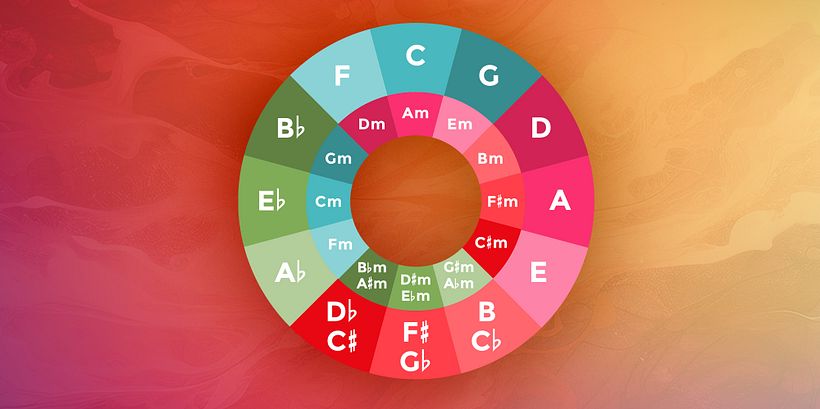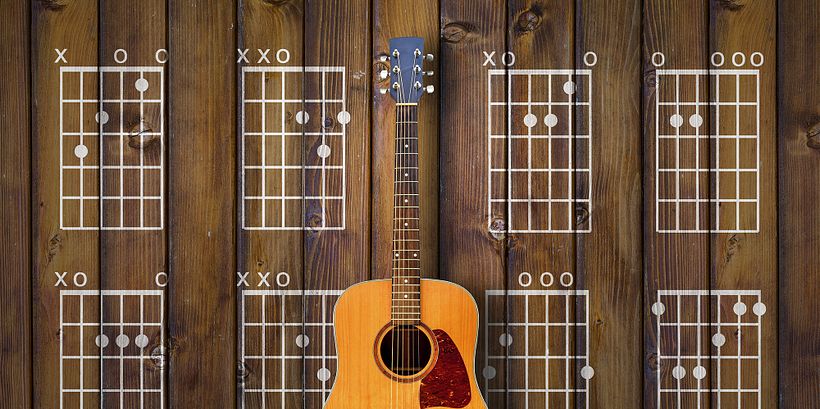What Is Music Theory and What Are Its Principles?

Discover the principles of music theory: rhythm, melody, harmony and more. Explore how these elements transform musical creation.

What Is Music Theory and Its Principles?
Music theory is the study of the elements and principles that make up music, such as rhythm, melody, harmony and musical structure. Its importance lies in the fact that it provides the tools necessary to understand and analyze music, allowing artists to create pieces more effectively.
Music theory facilitates the production process by providing composers and musicians with a framework for the creation of their works, helping them to make informed decisions regarding the choice of notes, chords, rhythms, and structures. It also promotes the development of musical awareness by training students' ears and minds to understand and appreciate music in a deeper way.
The Principles of Musical Notation
Musical notation is a system that uses the staff, composed of five lines and four spaces, to represent musical notes, but also to mark chords and rhythms. Musicians interpret it to play pieces correctly.
The symbols used in notation include both the different musical notes and rests that indicate pauses in the music, as well as chords and other elements such as dynamics and articulation.
Understanding Scales and Clefs
- Minor scales are distinguished from major keys by their interval patterns, with the third degree of the scale being the main difference.
- Major keys have a major third degree, while minor keys have a minor third degree, which changes the sound of the scale.
- Major and minor keys are related to tonalities, affecting the sound of the music by changing the reference point for the notes.
- Minor scale variations, such as natural, harmonic and melodic, impact the tone and emotion of the music by changing the notes and intervals used.
It is important to understand these differences in order to apply them effectively in musical composition and analysis.
The Circle of Fifths
The circle of fifths is a fundamental tool in music theory because it shows the tonal relationships between different keys. It functions as a guide to understanding chord progressions and their use in musical compositions. For example, by advancing in the circle of fifths, you move from one key to another that is related by a perfect fifth, providing a harmonious and natural transition.
In Western music, the circle of fifths is used to generate chord sequences, identify modulations between keys and create harmonic progressions. It is also useful for composers and arrangers when choosing the key of a piece of music. Therefore, understanding the circle of fifths is essential for any musician who wants to understand how Western music is constructed and organized. Understanding these tonal relationships provides the foundation for music creation and performance.

Chords and Harmony
Triad chords are formed by the superposition of three different notes of a scale. They can be major, minor, augmented, or diminished, depending on the combination of tones and semitones.
Playing chords in arpeggio form consists of playing the notes of a chord individually and in sequence. This can be applied on the guitar, piano or other melodic instruments. Harmonic progressions, on the other hand, are chord sequences that are used to create a harmonic base in music. These progressions can follow pre-established patterns or be created in an original way, and are fundamental to give structure and direction to a musical composition.
Major and Minor Keys
Major and minor keys are fundamental in music theory. The main difference between them lies in the arrangement of pitches and semitones, which affects the character and emotion of the music. Major keys are characterized by their bright and cheerful sound, while minor keys have a more melancholy and somber tone.
Major and minor scales are closely related to each other, with each major key having its relative minor key. The characteristics of minor scales include the presence of a lower third degree and the formation of minor chords.
The interval pattern of minor scales follows the formula of tone, semitone, tone, tone, tone, semitone, tone, tone, tone. There are different variations of the minor scale, such as harmonic, melodic and natural, each with its own distinctive characteristics.
Understanding the major and minor keys is crucial in Western music, as it affects the way compositions are written, performed and felt. This allows musicians to express a wide range of emotions through their work, creating pieces with depth and meaning.

Modes: The Pillars of Western Music
Musical modes are the different scales derived from the major and minor scales. There are seven modes, each with its own unique characteristics that make them sound different.
These modes are:
- Ionian
- Dorian
- Phrygian
- Lydian
- Mixolydian
- Aeolian
- Locrian
And they are derived from the major and minor scale by starting at different scale degrees.
The relationship between the modes and the major and minor scale is clear, since each mode shares the same notes as the parent scale, but with a different emphasis on certain notes, which gives it its particular sonority.
Rhythm and Time Signatures
Rhythm and time signatures in music are fundamental to the organization of sounds. Rhythm determines the accentuation and duration variation of each note. Time signature is crucial in establishing rhythmic structure, using conventions for regular and hierarchical accentuation of beats.
Syncopation rhythms and polyrhythm defy the traditional conventions of accentuation, adding complexity and vitality to the music. Syncopation creates an effect of accentuation at unexpected moments, while polyrhythm combines different simultaneous rhythms, defying the expected regularity.
Polyrhythms and Cross-Rhythms
Polyrhythms and cross-rhythms are fundamental elements in music, especially in African and Latin American music. These complex rhythmic patterns are characterized by the superimposition of different rhythms in the same measure, creating a sense of musical complexity and richness.
In African music, polyrhythms have their origin in traditional music, where they are used to express stories and cultural traditions. In Latin American music, cross-rhythms are found in genres such as salsa and Afro-Cuban music, bringing a distinctive energy and cadence.
These rhythmic patterns have also been incorporated into other musical styles such as jazz and rock, where they have contributed to enriching the variety of sounds and rhythms.
Some examples of polyrhythms and cross-rhythms are the triplet in jazz or John Bonham's drumming in Led Zeppelin's Good Times Bad Times.

Music Theory and Improvisation
Music theory and improvisation are closely related, as theory provides a framework for understanding the relationships between notes and chords, which is fundamental to musical improvisation.
For improvisers, music theory can be a valuable tool for making musical decisions more consciously and creatively. For example, understanding music theory can help a musician choose scales and chords that complement a progression, which enriches musical creativity.
Applying Music Theory to Composition
Music theory is a powerful tool for composition. By applying the principles of harmony and melody, you can create emotionally impactful and satisfying music. It is crucial to experiment with different chords, scales, and harmonic progressions during the composition process. It is also important to consider the duration of sounds and their relationship to rhythm. These elements are fundamental to creating effective and expressive musical compositions.
By understanding and applying music theory, composers can elevate their art and convey their emotions more powerfully through music. The combination of theoretical knowledge and creativity is the foundation for creating music that impacts and inspires the audience. Music theory is an invaluable tool that can take composition to new levels of excellence and depth.
Conclusion
Understanding music theory goes beyond learning scales and chords; it is unlocking the creative potential in music. Our Music Theory and Scouring for Film course is key to applying your theoretical knowledge into practical skills. Elevate your musical artistry today.
If you like music, keep learning with:
- Join our music courses
- Introduction to Music Production
- Find free samples for music





0 comments